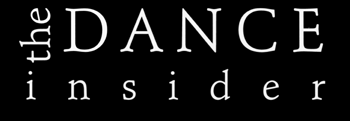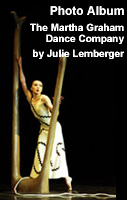
 |
 |
 |
 |
 |
|
The Buzz, 3-30: Our Forgotten
Mother By Paul Ben-Itzak PARIS -- This clear, brisk, early Spring morning at the Montmartre Cemetery reveals two large terra cotta pots of fresh flowers and plants on the grave of Louise Weber, not far from the cemetery's entrance. A metal post projecting from the pot reads "Le Moulin Rouge." The celebrated birthplace of the Cancan makes sure there are always fresh flowers on the grave of Weber, who, as the tomb's inscription notes, was better known as "La Goule" and the "creatrice de French Cancan." The flowers signal that the Moulin Rouge is a living institution which reveres and respects its heritage. Continue up the road a spell, turn left on the rue Hector-Berlioz, past the graves of Francois Truffaut and Heinrich Heine, and follow it to the rue Samson where, hidden away a few yards behind the ornate grave of Vaslav Nijinsky, you'll find the deteriorating final resting place of Marie Taglioni, the first dancer to use pointe artistically. A detached plaque, broken in half at the "T" in Taglioni, remembers her with the words "a sa mere bien-aimee" (to his/her beloved mother). April 23 marks the bicentennial of the birth of the mother of classical ballet. But does anybody care? Not, apparently, the most immediate beneficiaries of her legacy, the Paris Opera Ballet and School, which, at presstime, have no commemoration planned, save a reprise of Pierre Lacotte's reconstruction of Phillipe Taglioni's "La Sylphide" (although Taglioni is not credited as the original choreographer on the Opera's web site), the work in which his daughter performed her miracle. Here at the Dance Insider, we thought we could organize a celebration of Taglioni's legacy to honor her on her bicentennial; but no sponsors came forward. Not the ballet companies to whom she left that legacy, not the pointe shoe company owners who, one could say, owe their livelihoods to her. We also asked the DI's readers to send pointe shoes for her grave, our goal being to pile them so high on the grave that a visitor to Nijinsky's tomb (clearly marked with, among other things, a life-sized Petrouchka sculpture) would see the pointe shoes and investigate. We collected about 17 pairs, including six from Bloch and contributions from Anna Arias Rubio, Cynthia Quinn and Quinn Pendleton, Maina Gielgud and even a pair signed in Labanotation from our webmistress, Robin Hoffman. We could still use more, but we are running out of time. (Write me at for details) When we first put out the call for pointe shoes, a reader wrote in to point out that the shoes would be better put to use donated to the Cuban National Ballet; after all, Taglioni wouldn't have any use for them. What's at stake here, though, is not just a neglected grave but ballet's and dance's (remember, you moderns and post-moderns, at the time, Taglioni's innovation was the same sort of expansion of kinetic possibilities that you strive for) self-respect and thus the respect it garners in the general cultural and popular discourse. If we don't respect our history and revere our art's ancestors, why should the general public respect dance at all? I've been pondering why dance is the least respected of the arts. The answer isn't too hard to find; in the popular view, it's an activity associated with women and, in that context, seen by most more as a natural, even sexual extension of 'the fairer sex' than an art form. And, notwithstanding the recognition accorded to Anna Pavlova and Margot Fonteyn, the more celebrated dancers and choreographers in the wider (beyond dance) media are men: Baryshnikov, Nureyev, Nijinsky, Balanchine. Even if the attention given to Balanchine and Frederick Ashton in this their centennial year is deserved, let's face it: If there hadn't been a Taglioni, there wouldn't have been a Balanchine. Indeed, it is Taglioni and her descendents, ever ready to attempt the heretofore impossible, who enable choreographers to expand their and the art's vision. Now it's time to give back. Before long, unless something is done, the already detached tombstone will crumple into dust or be stolen, and no one will know who lies buried in that grave. Her name will continue to slide into oblivion, and the respect of dance for itself and by others with it.
|